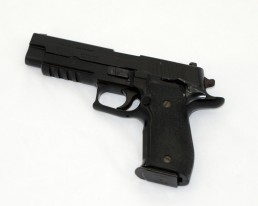Day: December 28, 2013
ZAUF: Introduction to Caliber
The next part of our Zen and the Art of Understanding Firearms (ZAUF) series is still part of the introduction. This entry in the series will teach you what it means when people say “.45 Caliber”, “9 millimeter”, or “12 gauge”.
With these designators, it comes down to differences between the region of origin: American vs the rest of the world. When someone says “a 45” or “45 caliber”, what do they mean? 45 of what? 0.45 of an inch, of course. So what does that mean exactly? The width at the widest part of the given bullet is approximately .45 of an inch wide in diameter. We say “approximately” because if you wanted to extend significant figures out to the thousandths place and beyond you’ll quickly realize that the measurements aren’t quite what you’d expect. In the case of .45, some 45 caliber bullets are commonly .451 inches and others are .452. Common calibers that you’ll see referred to this way are .22, .357, .45, .44, and .50. What you may also see are calibers such as .30-06 (pronounced “thirty aught six” in this case), wherein there is a hyphen followed by another number. These hyphenated numbers are completely arbitrary and their meanings range anywhere from total powder charge meant for use with the cartridge or even the year the cartridge was adopted.
In a metric world with international standards, bullets are measured using millimeters, such as 7.62x51mm and 5.56x45mm, or 7.62x39mm. What do these two numbers mean? The first number is the same as the American method of reference, meaning the width of the bullet at the widest point. The second number is the length of the casing.
So what is a gauge? Most commonly you’ll see gauge used in reference to shotshell measurements for shotguns. The real definition of what a gauge is is tangentially related to a similar density measurement of iron ball fitting in cannons that ends up being fairly obscure and technical, so we’ll spare you that aspect of it. What you do need to know and keep in mind is that usually the smaller the number, the bigger the shell, E.g. 10 gauge > 12 gauge > 20 gauge. The notable exception to this is .410 shotshell, which is measured in the American style of caliber mentioned above.
Sometimes there are cartridges that are very similar, or are slightly modified versions of each other that are designed for shooting at different pressures and will have both types of designations. Two common examples of this are .223 Remington and 5.56x45mm as well as .308 Winchester and 7.62x51mm. These two sets of cartridges are almost identical, and depending on the firearm, they will have cross compatibility. However, there are nuances I’m glossing over right now that will be explored later, so keep in mind that while they’re often interchangeable, that’s not always the case.

